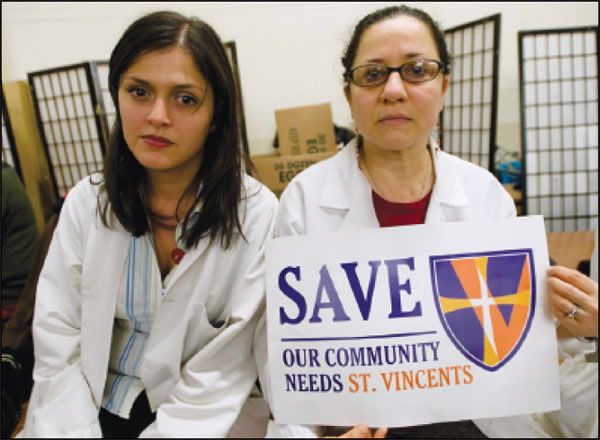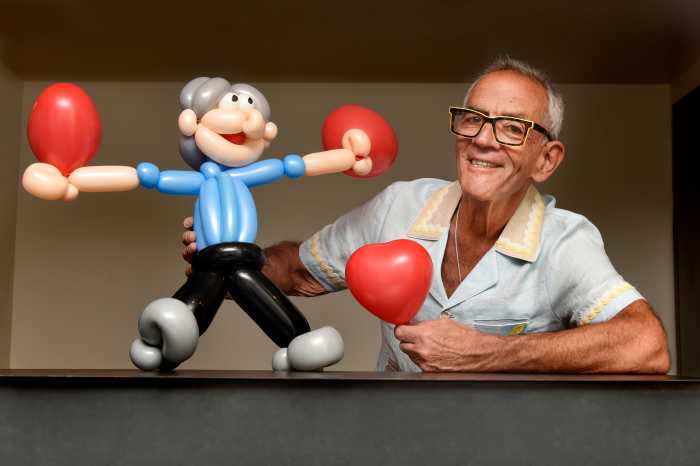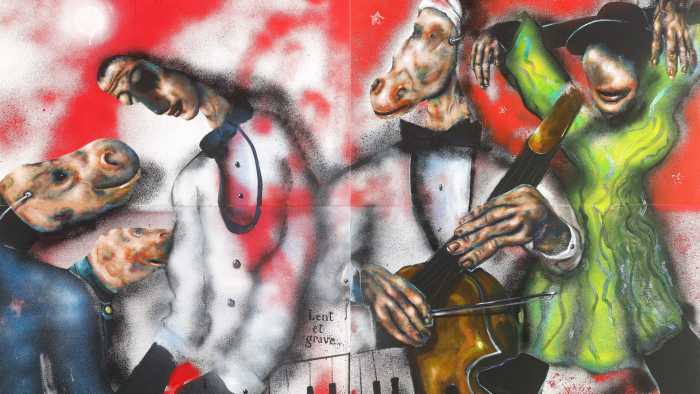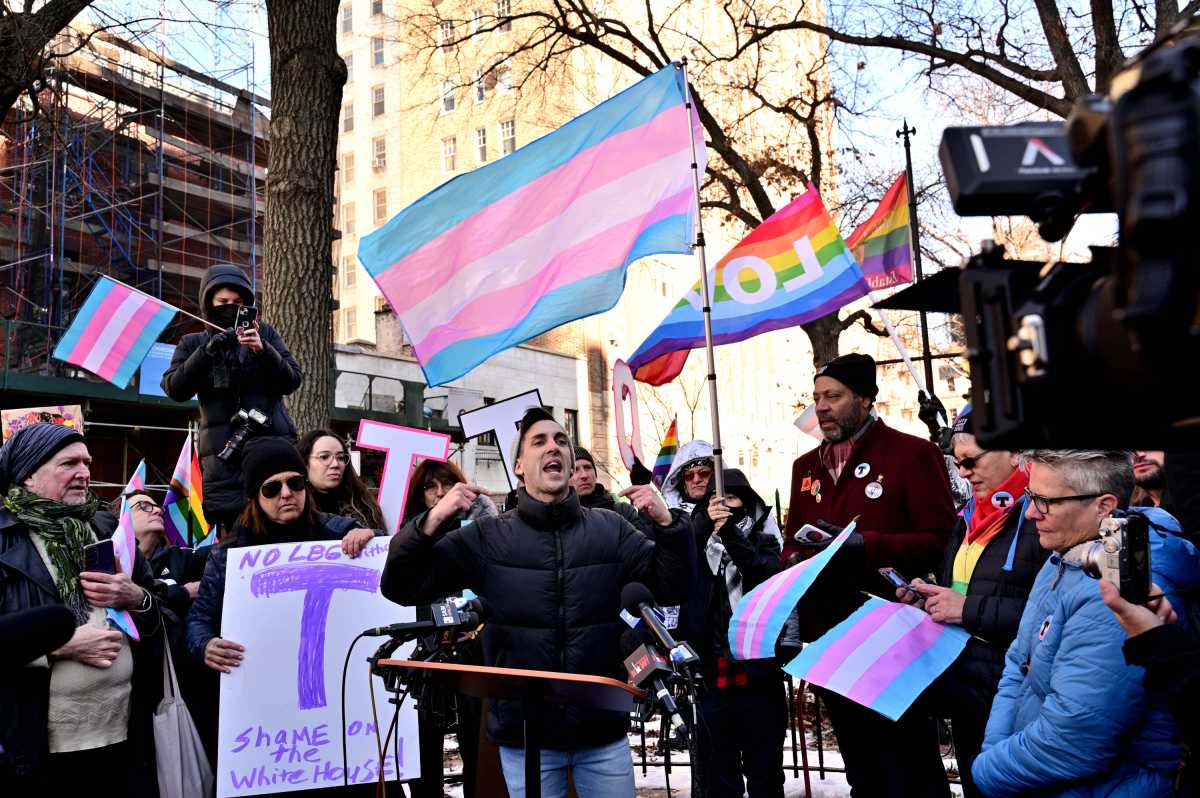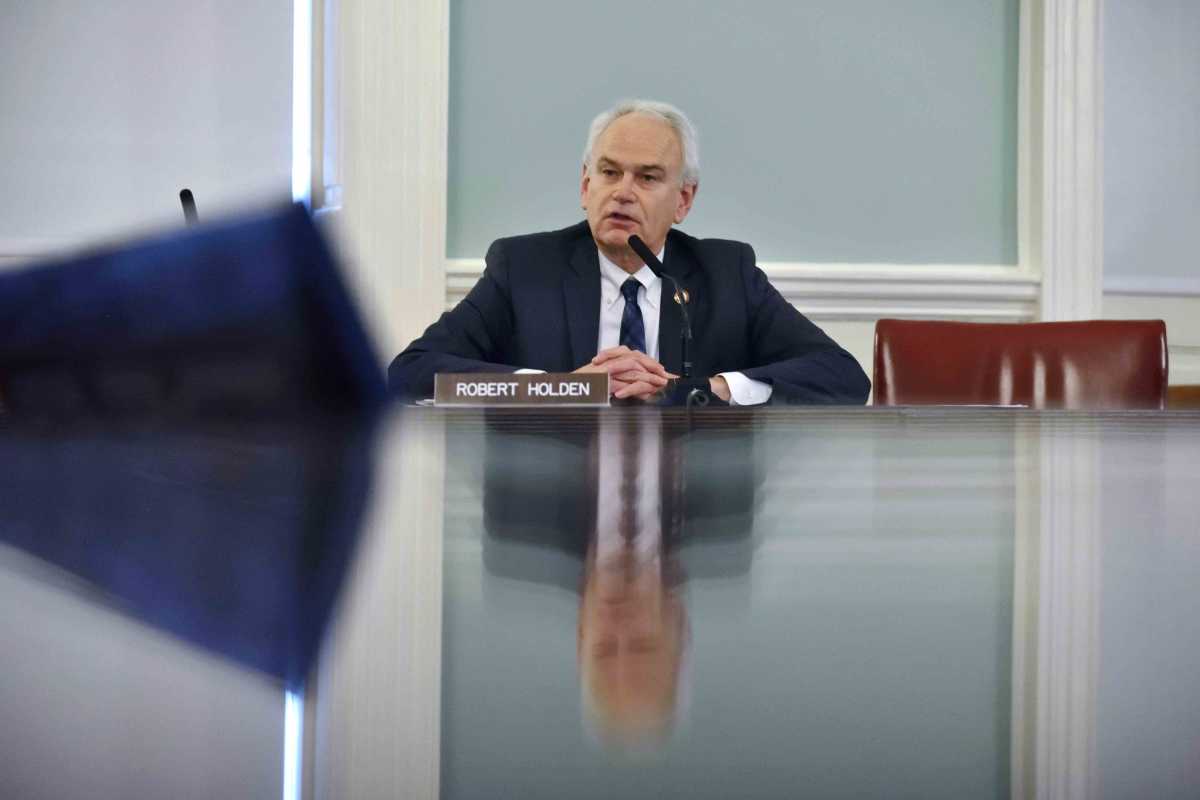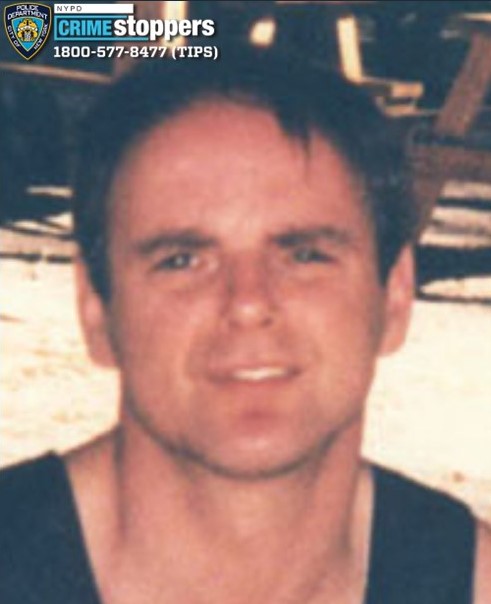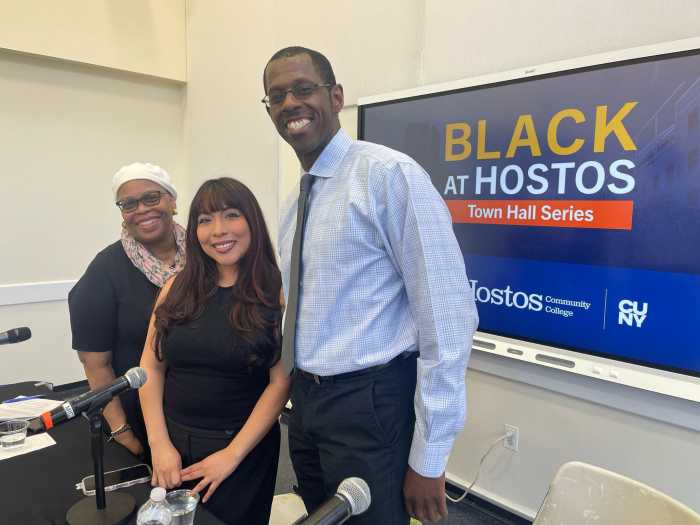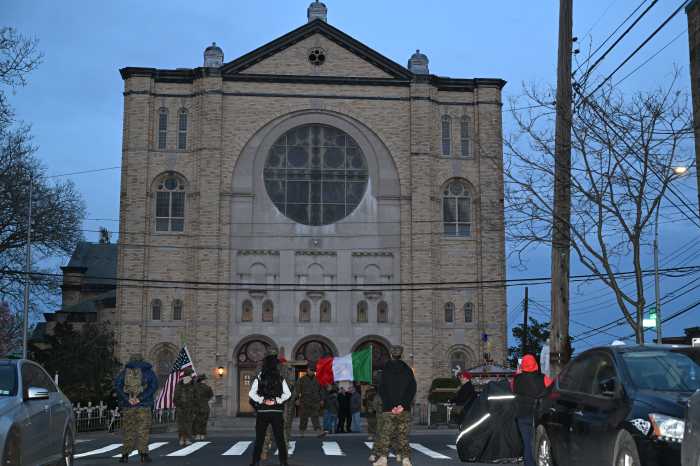By Albert Amateau
St. Vincent’s Hospital officials and employees and Village community leaders joined elected officials at a massive forum last Thursday vowing to do whatever it takes to keep St. Vincent’s open as a full-service hospital.
More than 500 people filled the basement of Our Lady of Pompei Church, at Bleecker and Carmine Sts., in a demonstration organized by hospital workers union Local 1199. They called on the State Department of Health to reject a proposal by Continuum Partners to take over the financially troubled hospital, close its acute-care, surgical and high-level emergency service and run St. Vincent’s as an outpatient community health center.
“We’re not just a community, we’re a family,” said Henry Amoroso, president and C.E.O. of St. Vincent’s, who reminded the forum that the 160-year-old institution also provides medical care to 40 homeless shelters throughout the city. “We ask with humility for the privilege to continue to serve you,” Amoroso said.
St. Vincent’s began a discussion at the end of last year with Continuum, operator for the past eight years of Beth Israel, Roosevelt and St. Luke’s hospitals, for proposals in the face of St. Vincent’s $700 million debt and the hospital’s loss of $5 million to $10 million per month. But the Continuum proposal did not include the acquisition of any of St. Vincent’s debt.
“Continuum proposed this as a concept, but the board is doing everything it can to see that St. Vincent’s remains an acute-care hospital in the Village,” Sister Jane Iannnucelli, of the Sisters of Charity and a member of St. Vincent’s board of directors, told The Villager at the beginning of the forum. The Sisters of Charity founded the hospital in 1849.
On Sat., Jan. 30, the hospital’s board of directors announced that it hired Grant Thornton LLP, a corporate advisory and restructuring service, to guide St. Vincent’s through a restructuring to help return the hospital to fiscal solvency. Mark E. Toney, Thornton managing partner, was named St. Vincent’s chief restructuring officer and will be responsible for hospital operations during the effort.
Kevin Finnegan, Local 1199 political director, said at the Jan. 28 forum, “Any plan that proposes to close the essential services at St. Vincent’s is not acceptable today, not acceptable tomorrow, next week or next year. Together we will deliver a plan to keep St. Vincent’s open.” Finnegan said a newly organized Coalition to Save St. Vincent’s would hold another rally Tues., Feb. 9, at 5 p.m. at the Local 32B-J union hall, 101 Sixth Ave., at Grand St.
“They do birth, they do geriatrics, they do palliative care,” said state Senator Tom Duane, chairperson of the Senate Health Committee. “St. Vincent’s does everything. They don’t turn anybody away,” he said, adding, “We’re pulling every lever and pushing every button, including frequent discussions with the highest levels of the State Department of Health, to keep St. Vincent’s the facility that it needs to be.” Duane said Health Department staff members have reassured him that no decision has been made, and that the department will continue to work with St. Vincent’s to find a solution to the crisis.
City Council Speaker Christine Quinn, Assemblymembers Richard Gottfried and Deborah Glick, City Councilmember Margaret Chin, Congressmember Jerrold Nadler and Manhattan Borough President Scott Stringer all said the closing of St. Vincent’s as a full-service hospital would be a health disaster for the West Side of Manhattan.
“The [federal] government decided a short time ago that AIG was too big to let fail,” Quinn recalled. “Well, St. Vincent’s is too important to let fail,” she declared. “It’s shocking that we have to be here at this meeting.”
Brad Hoylman, chairperson of the Community Board 2 St. Vincent’s Omnibus Committee, assured the forum that the Continuum proposal was not a done deal.
“It is a proposal that was leaked to the press,” he said, referring to a New York Post Jan. 28 article. “There is still time for St. Vincent’s to come out of this crisis stronger and healthier.”
City Comptroller John Liu said dropping St. Vincent’s acute care and its Level 1 trauma center would impact the entire city.
“Leaving Downtown and Midtown, where a million people come for work, shopping and entertainment, without a first-class emergency room, is unimaginable,” Liu said. He noted that Emergency Medical Service calls in Manhattan rose from 305,000 to 328,000 last year and that two hospital emergency rooms in Queens closed last year. “The cost of closing St. Vincent’s hospital would be astronomical in terms of human lives,” Liu said.
Public Advocate Bill de Blasio said, “It’s not right that this hospital, in this city of compassion, might have to close, when the president of the United States is pleading with Congress for people who don’t have healthcare.”
Janet Weinberg, head of Gay Men’s Health Crisis, said St. Vincent’s was a pioneer in 1981 when the AIDS crisis emerged, and that the hospital remains a vital service for people with H.I.V. Nancy Spanbauer, of the senior center at the Penn South co-op complex in Chelsea, said closing St. Vincent’s acute-care service would endanger the lives of the 2,000 seniors in Penn South, who would have to travel longer to Roosevelt Hospital on 59th St. or risk delays in cross-town traffic going to Beth Israel during emergencies.
Doctors, nurses and their patients also turned out at the forum to plead for St. Vincent’s.
Earlier the same day, between 11 a.m. and 1 p.m. more than 100 nurses, members of the New York State Nurses Association and other hospital workers braved a snow squall to demonstrate in front of the Seventh Ave. side of St. Vincent’s on W. 12th St. About 3,800 people work at the hospital, including about 800 nurses and a medical staff of about 1,000 doctors.
“We need help,” said Gina Darosso, a nurse at the protest with 24 years of service at St. Vincent’s. “Everybody else — all those bankers — got a stimulus package or a bailout. It’s up to the state to see that St. Vincent’s can’t close.” Darosso recalled that St. Vincent’s had to assume the debt of at least two Catholic hospitals in Brooklyn and Queens that closed a decade ago.
Susan Lane Hedge, with 40 years experience as a microbiologist at the hospital and a lifelong Village resident, said closing St. Vincent’s would devastate thousands of employees.
“We have some really dedicated employees at St. Vincent’s,” said Zoraida Nenadish, an administrative assistant at the hospital for the past nine years and a Lower East Side resident. “Some of them come from as far away as Pennsylvania and take more than two hours to get to work,” she said.



